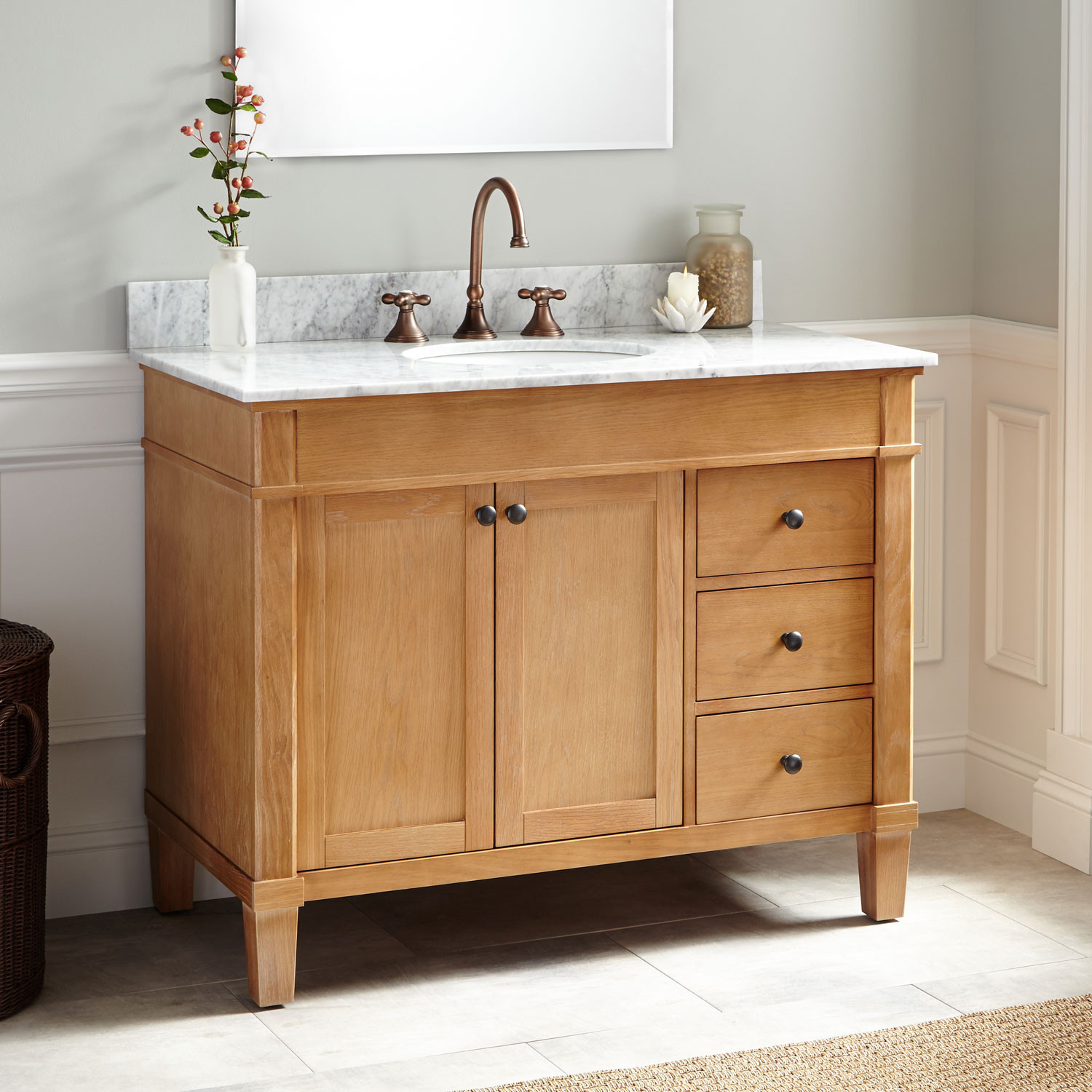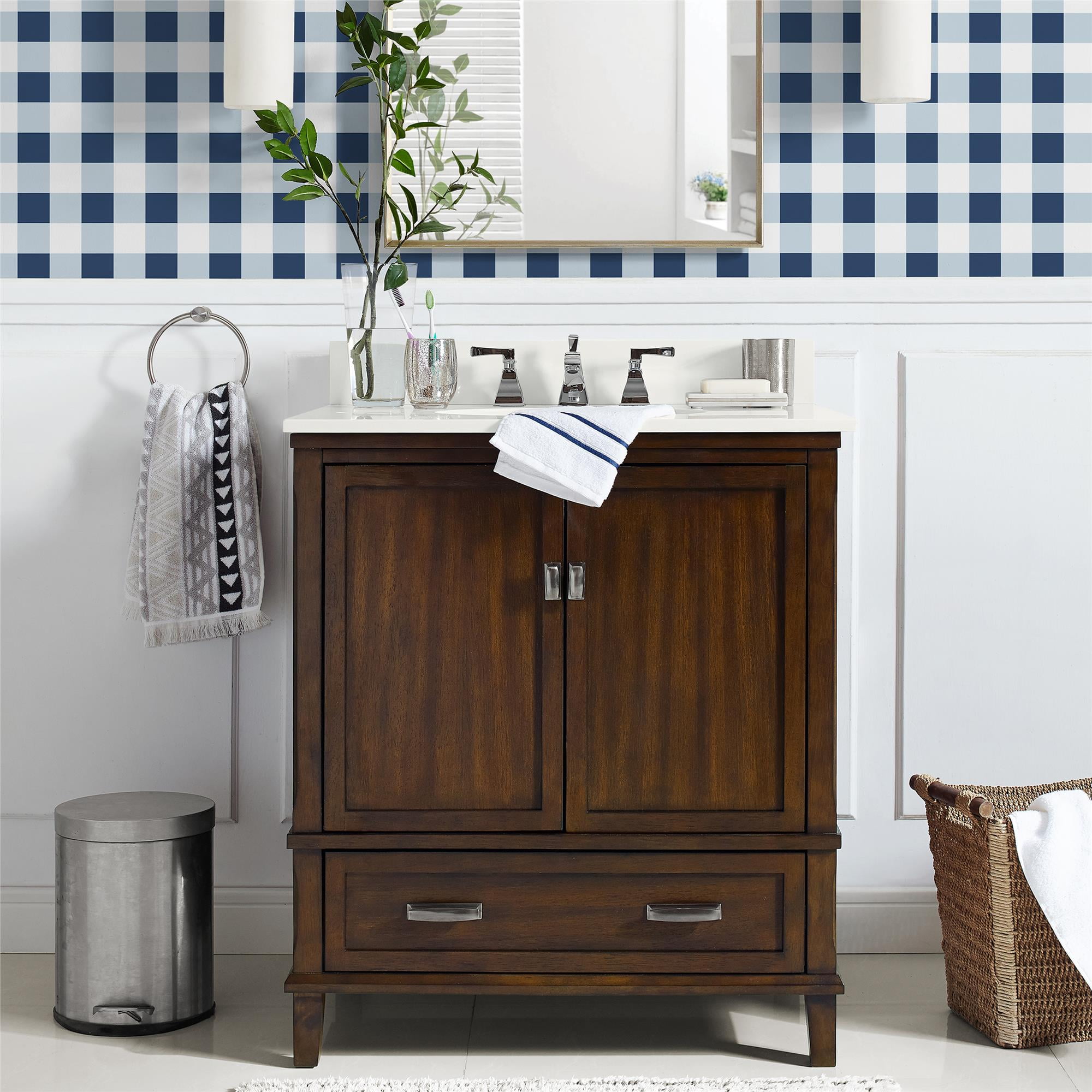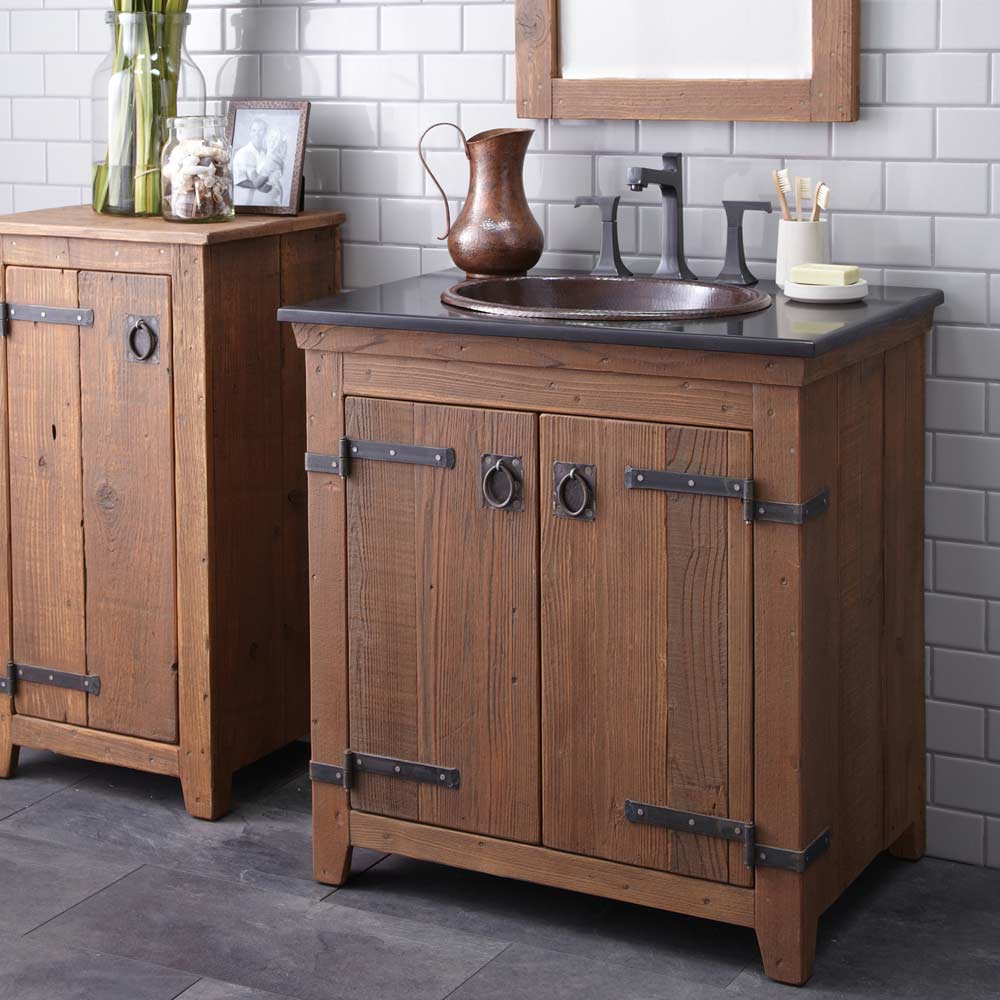Types of Wood Bathroom Vanities

A bathroom vanity is a key element in any bathroom, providing both functionality and style. It’s where you store your toiletries and get ready for the day. When choosing a bathroom vanity, the type of wood is a crucial factor, impacting its durability, aesthetics, and price. Let’s delve into the most popular wood types used for bathroom vanities and their unique characteristics.
Wood Types Used for Bathroom Vanities, Wood bathroom vanity 30
Wood is a natural material that offers warmth, beauty, and durability. Each wood species has unique characteristics, including grain patterns, durability, and price.
- Oak: A classic choice for bathroom vanities, oak is known for its strength, durability, and distinctive grain pattern. It’s relatively affordable and comes in a variety of finishes, from natural to stained. Oak is resistant to moisture and scratches, making it a good choice for high-traffic areas.
- Maple: Maple is another popular choice for bathroom vanities. It’s known for its tight grain and smooth surface, which makes it easy to stain and paint. Maple is also relatively durable and resistant to moisture, but it can be more expensive than oak.
- Cherry: Cherry wood is prized for its rich reddish-brown color and beautiful grain patterns. It’s a softer wood than oak or maple, so it’s more susceptible to scratches and dents. However, cherry is known for its elegant appearance and can be finished in a variety of ways to enhance its natural beauty.
- Walnut: Walnut is a luxurious and highly sought-after wood for bathroom vanities. It has a distinctive dark brown color with striking grain patterns. Walnut is very durable and resistant to moisture, but it’s also the most expensive wood on this list.
Wood Finishes for Bathroom Vanities
The finish you choose for your bathroom vanity can significantly impact its overall look and feel. Here are some popular options:
- Stained Finishes: Staining enhances the natural beauty of the wood by bringing out its grain patterns and color. Stained finishes can range from light and natural to dark and rich.
- Painted Finishes: Painting a bathroom vanity allows for a more modern and customized look. You can choose from a wide range of colors and paint finishes, such as glossy, matte, or distressed.
- Natural Finishes: Some bathroom vanities are left with a natural finish, showcasing the wood’s raw beauty. This option is often used for rustic or farmhouse-style vanities.
Styles of Wood Bathroom Vanities
Wood bathroom vanities are available in a wide range of styles to suit any taste. Here are a few examples:
- Traditional: Traditional bathroom vanities feature classic designs with intricate details and ornate hardware. They are often made from oak or cherry wood and finished in a rich stain.
- Modern: Modern bathroom vanities are characterized by clean lines, minimalist designs, and sleek hardware. They are often made from maple or walnut wood and finished in a natural or painted finish.
- Contemporary: Contemporary bathroom vanities blend traditional and modern elements, creating a unique and stylish look. They can be made from a variety of wood types and finished in a range of colors and styles.
Choosing the Right Size and Style

A bathroom vanity is a significant investment, so it’s essential to choose the right size and style that complements your bathroom space and meets your functional needs. The right vanity can transform your bathroom, adding both style and functionality.
Measuring Your Bathroom Space
Before purchasing a vanity, it’s crucial to measure your bathroom space carefully. Consider the available wall space, the distance to other fixtures, and the overall layout. Accurate measurements will help you determine the ideal size and configuration for your vanity.
For instance, if you have a small bathroom, a 30-inch vanity might be the perfect size, while a larger bathroom could accommodate a 60-inch or even a double vanity.
Selecting the Right Vanity Size
Vanity size is determined by the width of the vanity, typically measured in inches. The ideal vanity size will depend on the size of your bathroom and your personal preferences. A smaller vanity, such as a 30-inch model, might be suitable for a small bathroom, while a larger bathroom might accommodate a 60-inch or even a double vanity.
A 30-inch vanity is a popular choice for smaller bathrooms as it offers ample storage and counter space without overwhelming the space.
Exploring Vanity Styles
Bathroom vanities come in various styles to suit different tastes and bathroom designs. Here are some popular vanity styles:
- Single Sink Vanities: Single sink vanities are a classic choice, offering a compact and efficient design. They are perfect for smaller bathrooms or for those who prefer a minimalist look.
- Double Sink Vanities: Double sink vanities are ideal for larger bathrooms or for families who need extra space and functionality. They offer ample counter space for two people to get ready simultaneously.
- Pedestal Vanities: Pedestal vanities are characterized by their elegant and space-saving design. They are a great choice for smaller bathrooms, as they offer a minimal footprint and a touch of sophistication.
Incorporating a 30-Inch Vanity
A 30-inch vanity can be incorporated into a bathroom design in various ways. It’s a versatile size that can work well in small and medium-sized bathrooms. Here are some tips for incorporating a 30-inch vanity:
- Maximize Storage: Choose a 30-inch vanity with ample storage options, such as drawers, cabinets, and shelves. This will help keep your bathroom organized and clutter-free.
- Choose the Right Mirror: A large, rectangular mirror can help make a small bathroom feel more spacious. Consider a mirror that extends beyond the width of the vanity to create a more expansive look.
- Accessorize: Add decorative accessories, such as towels, plants, and candles, to personalize your 30-inch vanity and create a welcoming ambiance.
Vanity Sizes and Bathroom Space Recommendations
Here’s a table outlining common vanity sizes and their corresponding bathroom space recommendations:
| Vanity Size (inches) | Bathroom Space Recommendation |
|---|---|
| 30 | Small bathrooms, powder rooms |
| 36 | Small to medium-sized bathrooms |
| 48 | Medium to large-sized bathrooms |
| 60 | Large bathrooms, master bathrooms |
Features and Functionality: Wood Bathroom Vanity 30

A wood bathroom vanity offers more than just a stylish addition to your bathroom; it’s a functional piece of furniture designed to enhance your daily routine. The functionality of a vanity goes beyond its aesthetic appeal, encompassing various features that cater to individual needs and preferences.
Storage Options
The storage capacity of a vanity is crucial, especially in smaller bathrooms where space is limited. Wood vanities offer a wide range of storage options, allowing you to keep your bathroom essentials organized and readily accessible.
- Drawers: Vanities often feature drawers of varying sizes, providing ample space for storing toiletries, medications, and other personal items. Some vanities even have soft-close drawers for a smooth and quiet operation.
- Cabinets: Cabinets offer a more enclosed storage solution, perfect for concealing less aesthetically pleasing items. They can be equipped with shelves, allowing for vertical organization and maximizing storage capacity.
- Open Shelves: Open shelves provide easy access to frequently used items, such as towels, hand soaps, and decorative accents. They can be used to display decorative items, adding a touch of personality to your bathroom.
Countertops
The countertop of a vanity serves as a functional surface for daily tasks like brushing teeth, applying makeup, and preparing for the day. It also plays a significant role in the overall aesthetic of the bathroom.
- Granite: Known for its durability and natural beauty, granite is a popular choice for bathroom countertops. It comes in a wide variety of colors and patterns, allowing for a unique and personalized look.
- Marble: Marble is another natural stone that exudes elegance and sophistication. It’s known for its intricate veining and cool, smooth texture. However, marble is more porous than granite and requires regular sealing to prevent staining.
- Quartz: Engineered quartz is a non-porous, durable material that’s resistant to scratches, stains, and heat. It comes in a wide range of colors and patterns, mimicking the look of natural stone.
- Laminate: Laminate is a budget-friendly option that offers a variety of colors and patterns. It’s easy to clean and maintain, making it a practical choice for busy bathrooms.
Hardware
Hardware elements, such as knobs, pulls, and towel bars, add the finishing touches to a wood bathroom vanity. They can significantly impact the overall style and functionality of the vanity.
- Knobs: Knobs are a classic choice for drawers and cabinets. They come in various styles, from simple and minimalist to ornate and decorative.
- Pulls: Pulls offer a more contemporary look and provide a comfortable grip for opening drawers and cabinets. They are available in various materials, such as metal, wood, and ceramic.
- Towel Bars: Towel bars are essential for hanging towels and keeping them readily accessible. They come in various lengths and finishes to match the overall style of the vanity.
Countertop Material Comparison
| Material | Pros | Cons |
|---|---|---|
| Granite | Durable, scratch-resistant, heat-resistant, wide variety of colors and patterns | Porous, requires sealing, can be expensive |
| Marble | Elegant, unique veining, cool to the touch | Porous, susceptible to staining, requires regular sealing, can be expensive |
| Quartz | Non-porous, durable, scratch-resistant, stain-resistant, heat-resistant, wide variety of colors and patterns | Can be expensive, may not have the same natural look as granite or marble |
| Laminate | Affordable, easy to clean, wide variety of colors and patterns | Not as durable as natural stone or engineered quartz, prone to scratches and stains |
Wood bathroom vanity 30 – A wood bathroom vanity in 30 inches is a classic choice for smaller bathrooms, offering a touch of warmth and sophistication. However, before you install it, consider the practicalities of hot water, especially if you live in a region with cold winters.
To ensure you have a steady supply of hot water for your morning shower, you’ll need to choose the right geyser for your needs, and a great resource to help you with this decision is which geyser is best for bathroom.
Once you’ve sorted out the hot water situation, your 30-inch wood vanity will be ready to add a touch of elegance to your bathroom.
A 30-inch wood bathroom vanity can be a stylish and practical choice for a small space, especially if you’re looking to create a cozy and inviting atmosphere. For those who are considering a tiny house, you might want to look at innovative space-saving solutions like a tiny house bathroom shower , which can offer a surprisingly luxurious experience in a limited footprint.
No matter your bathroom size, a well-chosen wood vanity can bring warmth and character to the space, and with clever design, you can maximize storage and functionality even in the smallest of bathrooms.